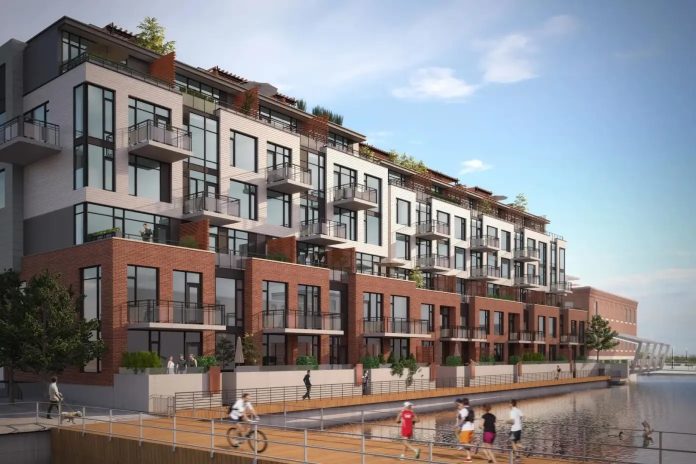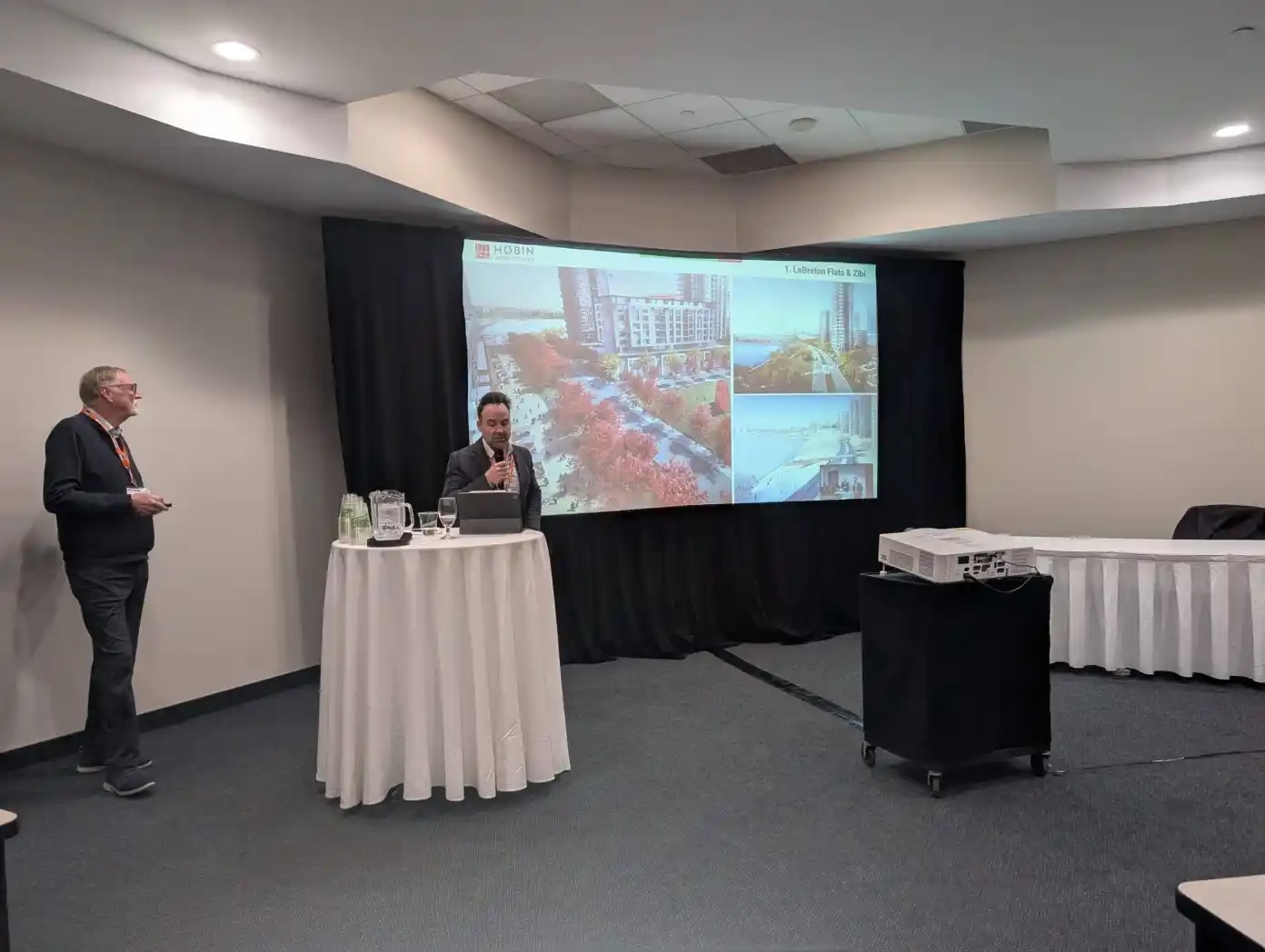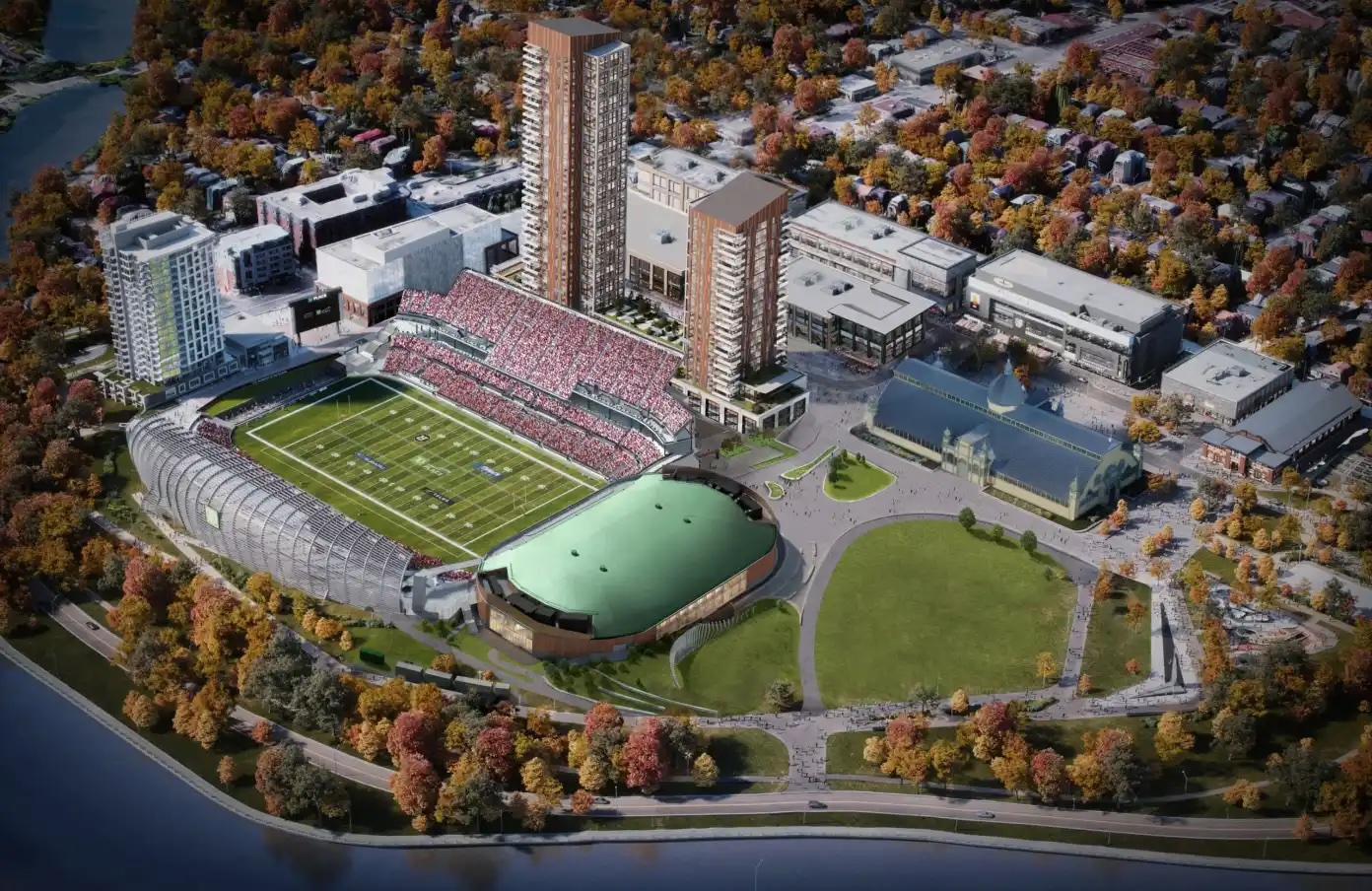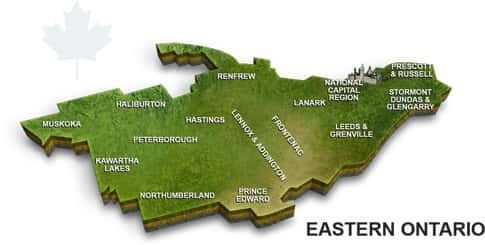
By Mark Buckshon
Ottawa Construction News staff writer
Ottawa stands at the confluence of three major rivers – the Ottawa, the Gatineau, and the Rideau – each playing a vital role in the city’s history and development. From the early days of First Nations transportation and the booming lumber industry to the modern challenges of urban development, the city’s relationship with its waterways has been a constant catalyst for change.
A recent presentation titled “Rivers of Change” at the Merkley Supply Ltd. trade show in Ottawa on March 27 delved into this rich history and explored the ongoing efforts to revitalize Ottawa’s waterfront spaces. Architects Barry Hobin and Patrick Bisson at Hobin Architecture Inc. provided insights.
The Ottawa River’s significance to the region’s development cannot be overstated. The early lumber industry, a driving force in Ottawa’s growth, heavily relied on the river for transportation and processing. As Hobin noted, “In the early days, the water was everything.” The Rideau Canal, another critical waterway, also played a key role in the city’s industrial past, with rail lines and industrial sites lining its banks.
 However, the city’s relationship with its waterways has not always been harmonious. The development of parkways in the mid-20th century, while intended to beautify the city, inadvertently cut off access to the river’s edge in many areas. This disconnection became a focal point for reimagining Ottawa’s urban spaces.
However, the city’s relationship with its waterways has not always been harmonious. The development of parkways in the mid-20th century, while intended to beautify the city, inadvertently cut off access to the river’s edge in many areas. This disconnection became a focal point for reimagining Ottawa’s urban spaces.
LeBreton Flats: A case study in urban renewal
The LeBreton Flats area serves as a prime example of Ottawa’s ongoing efforts to reconnect with its waterfront. Once a major industrial site, it is now undergoing a transformation into a modern, mixed-use community. The redevelopment project aims to create a vibrant waterfront community with a focus on pedestrian connections, accessibility, and public spaces.
A key element of the plan involves re-engaging with the historic aqueduct, incorporating year-round animation programs, and celebrating the site’s heritage attributes. This focus on heritage and community engagement is a recurring theme in Ottawa’s waterfront development projects.
Lessons from abroad and local innovations
The presentation also highlighted successful waterfront development strategies from other cities, including Copenhagen and Amsterdam, where integrating development directly with the water’s edge has created vibrant and accessible public spaces.
In Ottawa, projects like the Zibi development showcase a similar approach, creating a sustainable community that embraces its waterfront location. The redevelopment of the Rideau Canal area also demonstrates a commitment to creating active and engaging spaces that connect residents and visitors to the water.
 Lansdowne Park: A case for re-engagement
Lansdowne Park: A case for re-engagement
The discussion extended to Lansdowne Park, a significant piece of Ottawa’s urban fabric. While the park has become a popular destination, there are ongoing discussions about how to better integrate it with the Rideau Canal. Ideas have been proposed to create a waterfront experience at Lansdowne, drawing inspiration from the historical slackwater canal that once existed on the site.
 Greystone Village: A model for community integration
Greystone Village: A model for community integration
The Greystone Village development offers a model for integrating new communities with existing ones while respecting the natural environment. The project carefully considered the heritage of the site, the need for diverse housing options, and the importance of creating accessible connections to the Rideau River. Innovative solutions, such as a shared pedestrian/cyclist roadway, demonstrate a commitment to creating people-centric spaces.
Ottawa’s ongoing journey to re-engage with its waterfronts is a complex but crucial endeavour. It involves balancing historical preservation, modern development, community needs, and environmental considerations. As the city continues to evolve, these projects offer valuable lessons in creating vibrant, accessible, and sustainable urban spaces that celebrate Ottawa’s unique relationship with its rivers and canals.
Captions
Kanaal : Kanaal is Ottawa’s first example of multi-residential development built directly adjacent to a canal system







